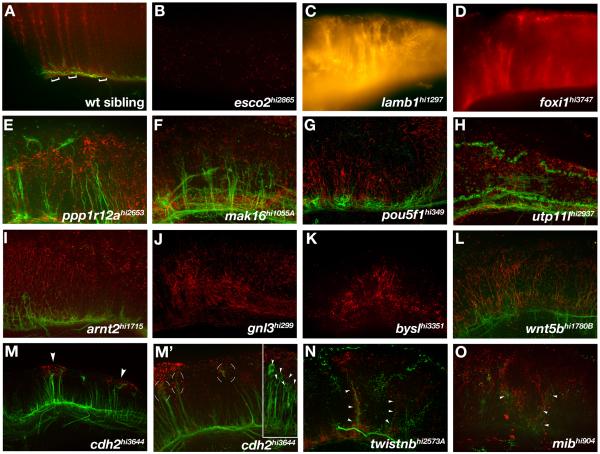Figure 4. Hindbrain mutants.
(A-O) Lateral views of hindbrains of (A) wild type and (B-O) mutant embryos. (A) Brackets show the segmental organization of radial glial cells that extend processes dorsally to the pial surface. (B) esco2 mutants had reduced radial glia in the hindbrain radial. (C-G) lamb1, foxi, ppp1r12a, mak16, and pou5fl mutants had disorganized radial glial process that were still segmentally organized. (H-L) utp11l, arnt2, gnl3, bysl, and wnt5b mutants also had disorganized radial glial processes in a generally disrupted hindbrain. (M-O) cdh2, twistnb, and mib mutants had ectopic clusters of Gfap labeling. (M) cdh2 mutants showed ectopic dorsal glial clusters (M, arrowheads) associated with mis-located axonal projections (M’, circular brackets). (M’) Inset shows another cdh2 mutant embryo with neuronal cell bodies associated with glial clusters (arrowheads). (N,O) twistnb and mib mutants had mispositioned axons associated with mispatterned astroglia (arrowheads). (B,C,D,J,K) Axon labeling is not visible due to faint fluorescent labeling.

